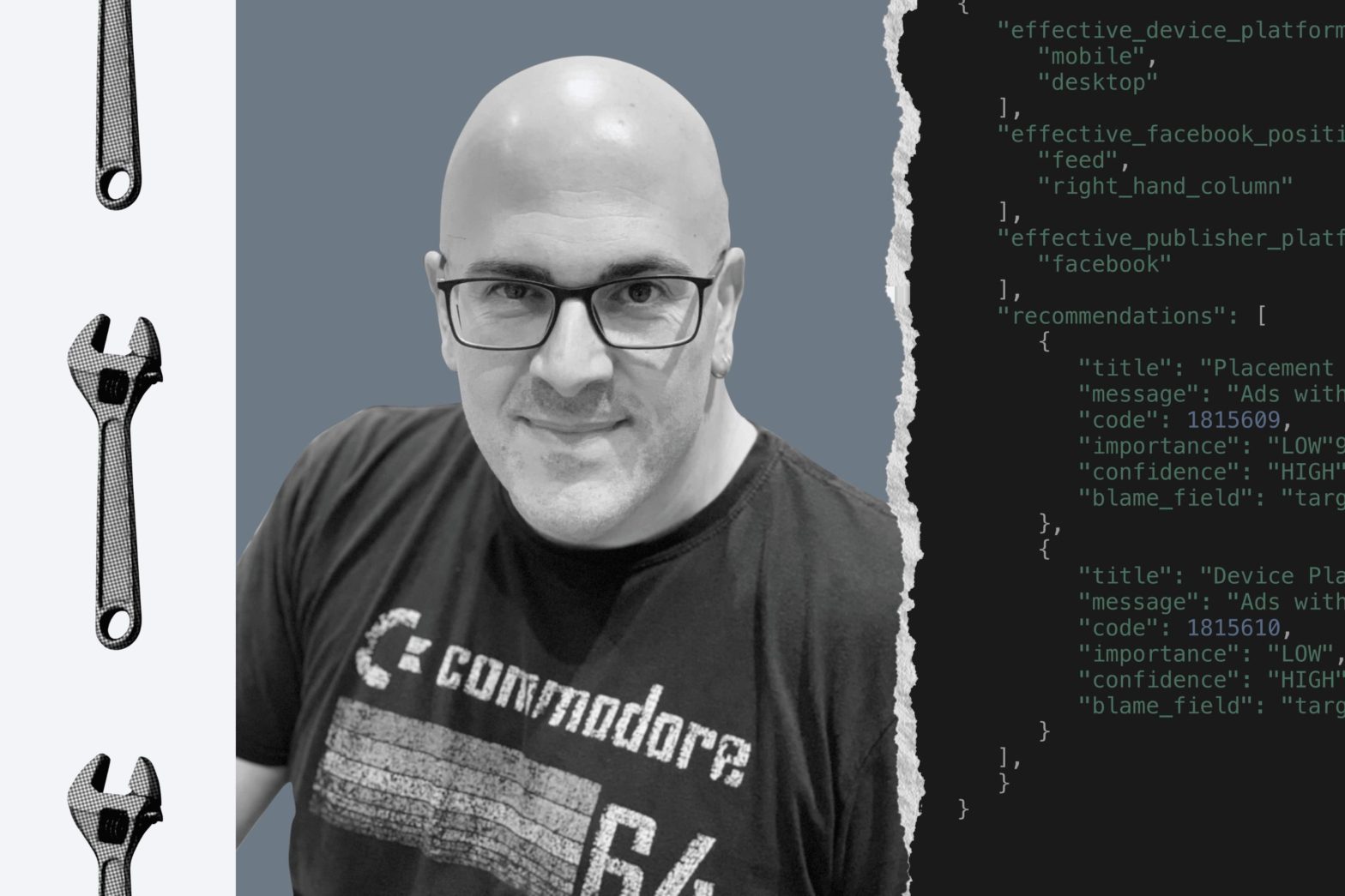The attribution playbook: Roy Yanai on navigating a post-ATT world

Surviving the attribution earthquake
Roy, you were tasked with leading AppsFlyer’s response to the massive industry changes brought on by Apple's ATT framework. What was that period like from the inside?
It’s a good question. It’s been hectic, there’s no doubt about it. It wasn’t easy because on one hand, we did have confidence. We knew solutions were going to be rough, but at the same time, we knew that we were in the best position to overcome the challenge. The entire market was broken, and yet we, as the leader, felt we were the best ones to come up with new solutions. Of course, someone could always come and leapfrog us, but we didn’t see it as likely, and we did our best to make sure it didn’t happen.
The mobile ecosystem has been anything but static; in fact, its constant state of change is what makes it stable in its own way. We’ve had so many ups and downs, from different regulations with Facebook and Google to the history of device identifiers. The IDFA itself was supposed to be the privacy solution, and then it was deemed not privacy-centric and was deprecated. So we communicated to our customers, and we were right, that this was another bump in the road. There’s no doubt it was a major bump, a major milestone, but here we are four years later and it’s kind of behind us. We’re still working on solutions and on our ability to best measure, optimize, and let marketers run effective campaigns, but the initial chaos has subsided.
During that chaotic time, what role did AppsFlyer play in helping the market understand what was happening?
We had to stay ahead of the curve. This included multiple initiatives within AppsFlyer, as well as leading the market through thought leadership and just sharing our understanding. I spent morning to night doing webinars and joining calls. You’d be surprised to know how many Meta, TikTok, Google, and Salesforce employees I have trained. We had to win in this game, and it very fast became clear that we were the market expert. We had to explain what had happened, what SKAdNetwork was, and how we saw things going forward for the ecosystem.
From your vantage point, how did different types of advertisers react to this shift? Who was able to adapt the best?
Gaming companies were a key example. For many of them, especially in hyper-casual, it was a life-or-death situation. Their business model was to buy cheap, make a little bit of revenue with very thin margins, and scale. They would make a few cents on every user, but they would get millions of users. ATT kind of broke that model, because once the cost per acquisition is higher or unknown, the model doesn’t work anymore. For a huge e-commerce brand that’s been around for 20 years, it’s a dent. But for hyper-casual gaming, it could be the end. A lot of them did not survive that.
They had to adapt, otherwise they were gone. We saw it in our data; spend on iOS dropped. Some companies just decided to stop investing in iOS for years and moved their budgets to Android. I was just talking to an e-commerce customer of ours, who was very heavy on iOS, who decided to go web-only. That’s it. Now, they want to start coming back to iOS, but only after careful incrementality testing.
The truth about measurement
Let's talk about the evolution of attribution. With all the changes in the ecosystem, what is your take on last-click versus more complex models like MTA?
In the end, what do you want to do? You want to measure efficacy, you want to measure how much ads are affecting user actions. Last-click has downsides, there’s no doubt about it, but it’s the best the ecosystem can offer in terms of being real-time, simple, and scalable down to the ad level, creative level, and geo level.
What about Marketing Mix Modeling (MMM)? It's a hot topic, but you seem skeptical.
It’s a big black box that is very hard to validate. Not only that, but it also requires a lot of effort from advertisers. A lot of people in the industry like to talk about it, but every time you ask them if they’re actually using it, most of the time the answer is no. So far, I’ve met only one customer that actually works according to MMM.
So if not MMM, where does incrementality testing fit into your measurement philosophy?
I am a big believer in incrementality testing. However, there’s a big “but” here: incrementality is very hard to run at scale. Setting up an experiment, defining audiences, and managing holdout groups is difficult. Not showing ads to 20% of your users is costly, not just in terms of ad spend but also in opportunity cost.
My goal, and our goal at AppsFlyer, is to make incrementality more available, less painful, and more efficient. And yet, I don’t think we will ever achieve the scalability of last-click. That’s why I believe in a hybrid approach, where you have last-click for daily decisions and use incrementality testing to feed insights back into your strategy, maybe on a campaign level. I’m not a big believer in always-on incrementality testing; I believe in running distinct experiments.
How can AI help solve the operational challenges of running incrementality tests?
This is the way forward. I envision an “incrementality co-pilot” powered by AI that can really help run automated tests. The challenge for marketers has always been the sheer amount of work it requires. They run it once, twice, three times, and then they’re done with it. Another reason is that sometimes the tests give them answers they don’t like, telling them a campaign isn’t working.
An AI co-pilot can help run these experiments seamlessly. It can validate which campaigns are suitable for testing, auto-suggest the experiment, and once you approve, it can automate the setup and execution. Post-experiment, it can even suggest or take actions based on the results. The machine learning and statistics have been available for a while; the real challenge is the operation, and that’s what AI can solve.
The next wave of innovation
Beyond future concepts, how is AppsFlyer using AI in its products today?
We are, as we speak, putting a lot of AI into the platform and have already released a few features. For example, when you want to open a support ticket, before you actually open it, our system gives you an AI-generated answer. Only if you’re not happy with that do you say, “No, no, get me support people.” A lot of users actually say, “Okay, thank you, that was good.” That has worked really well for us in helping customers.
Another area is our anti-fraud product, which implemented AI a year ago. We’ve seen much, much better fraud detection, and it’s much more stable. One of the issues we had was volatility; we’d detect something, the fraudster would pick up on it and find a way through, then we’d block it again. As an advertiser, this creates volatility in your data. Now with AI, the data is stable. It fights better. You can literally see it in the charts.
Looking forward, what are the most interesting developments in measurement that companies should be paying attention to?
One very important development is that Meta recently let customers know they’re bringing back AMM, which is the ability to get device-level data back from them once you sign a contract. This is big news. I think it’s due to a combination of pressure from the market and their own internal strategy.
The general trend of the world is going cross-device and cross-platform. We are very much aligning with this and putting our efforts towards it. Users are interacting with your brand on multiple devices across all verticals. In e-commerce, you can buy on the web, on the app, or even interact on CTV. As a brand, you want to measure everything. This also happens in gaming, where companies are expanding to PC and consoles to build outside the mobile duopoly. We see the world going in that direction, and measuring campaign performance across devices is very hard, but very important.
Are there specific markets or types of advertisers that are surprisingly advanced in their strategies?
Not necessarily vertical-based, but geo-based. I think customers from the Greater China Region are surprising. They are extremely fast to adopt new things, extremely fast to try things out, and extremely fast to hack their way to growth. They often pull us in the direction the measurement business needs to go.
One thing that has become very popular in the past two years, partly due to the iOS changes, is the web-to-app flow. Because advertising on the web is so much cheaper, the flow is to advertise on the web, move the user to a mobile web landing page, and then move them to the app. It’s a longer funnel, but the cost savings justify it. This was a creative flow that I believe evolved from Chinese advertisers and has now been adopted globally. It’s not just about speed, but also their creativity in trying new things.
What do you see as the next major systemic risk or change for the measurement industry, similar to the impact of ATT?
I don’t see another ATT-like event on the horizon, but I would look at AI as the next interesting venue of where things may go. New channels might emerge. Maybe discovery will happen within ChatGPT, or maybe shopping will happen within different AI tools. Perhaps agents will do the shopping for us. As brands, we have to ask, how do we measure that? And perhaps, how do we create an agent that will sell for us? I think the next big change is more likely to come from the direction of how AI is going to change marketing and measurement, rather than another privacy-enforced framework. This shift is also reflected in budgets; we’re seeing brand advertising getting smaller and smaller versus direct response, because direct response is measurable, and that’s what advertisers prefer.
A founder's journey in measurement
Before your eight years at AppsFlyer, you were a founder yourself. Could you tell us about that experience?
Yes, prior to AppsFlyer, I co-founded my own company with two partners. We wanted to achieve e-commerce delivery and tracking consolidation. The idea was that as a consumer, you shouldn’t care which delivery company is bringing your package; you should be able to get it on your own terms. We wanted to make it seamless for the recipient. We raised a seed round of a few hundred thousand dollars, which back then was a seed round, but today would be a pre-seed. After a couple of years, we felt it was coming to an end and decided to pull the wire. But I still feel the pain of that problem today; I wish the company had worked out.
And how has your journey evolved within AppsFlyer over these last eight years?
It’s been a huge journey of growth for both the company and me. I started from an IC PM position, working mostly in the data areas. I moved my way up to more of the insights areas, and then I started a new unit within AppsFlyer for our incrementality product because I recognized the need for more than just a last-click attribution solution. Then iOS 14 came along, and I was asked to lead the area of SKAdNetwork and our solutions for iOS and ATT. After that, I was promoted to take over all of our measurement product, which is attribution and all of our core products, and that’s where I am today.
To wrap up, a few rapid-fire questions. What are you reading right now?
Good to Great. I love it.
If you joined a new company and could only bring three tools to start, what would they be?
Other than AppsFlyer, I would bring an engagement platform, like Braze or a competitor, to help me manage campaigns and emails. And I would bring a backend analytics platform, like Amplitude.
Last question: what's the meaning of life?
I would say, self-fulfillment.

Beyond the Funnel: Hannah Parvaz on Customer-Led Growth & Navigating Martech Shifts
Hannah Parvaz shares her journey from music to app marketing, focusing on customer psychology and AI-driven growth strategies...